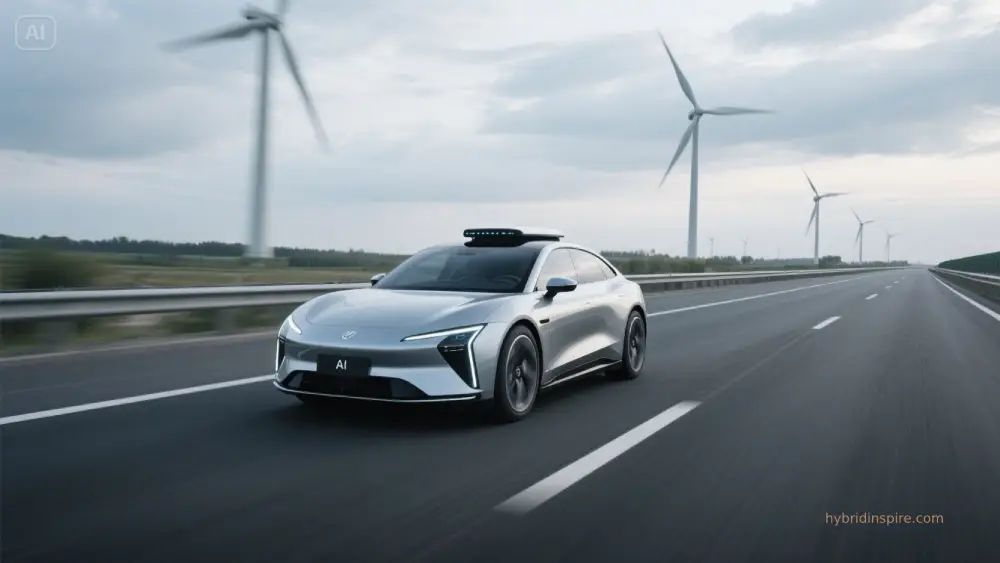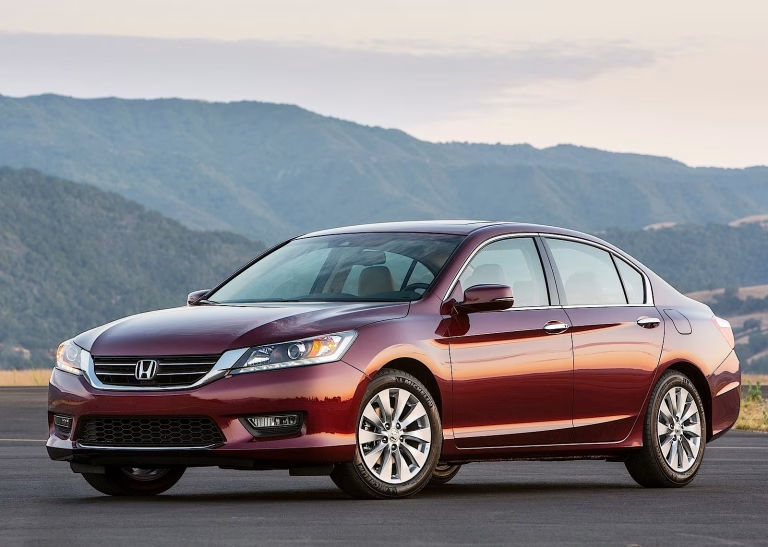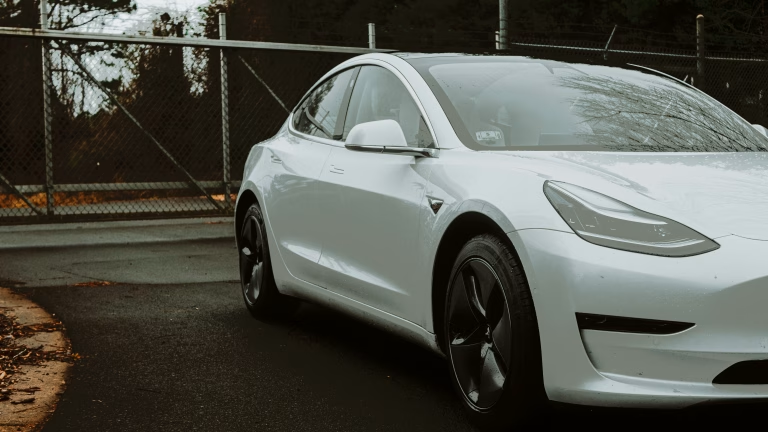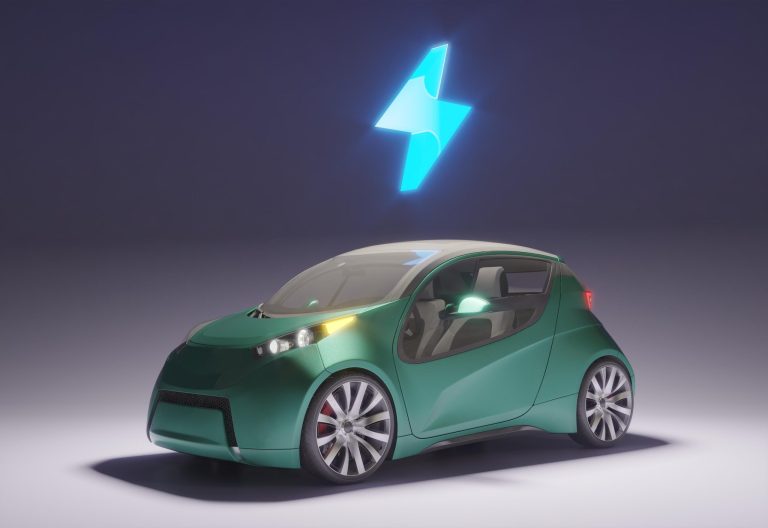Autonomous Driving Hybrid Cars: The Future is Here – 15 Powerful Insights

Table of Contents
Introduction to Autonomous Driving Hybrid Cars
The transportation world is evolving rapidly. Autonomous driving hybrid cars are no longer the stuff of science fiction—they’re here, and they’re changing everything from safety to sustainability. Combining two revolutionary technologies—hybrid propulsion systems and autonomous driving—these vehicles promise a cleaner, smarter, and safer way to move.
The Evolution of Hybrid Vehicles
Hybrid cars have been around since the late 1990s, with Toyota Prius paving the way. These vehicles use a combination of an internal combustion engine and an electric motor to maximize fuel efficiency and reduce emissions.
Over the years, hybrid technology has improved drastically:
- Early Hybrids (1997–2010): Focused mainly on fuel efficiency.
- Modern Hybrids (2010–2020): Introduced plug-in features and better battery tech.
- Smart Hybrids (2020–present): Now equipped with AI-based power management and integrated with semi-autonomous systems.
What Is Autonomous Driving?
Autonomous driving refers to a vehicle’s ability to operate without human intervention. These vehicles use a network of sensors, radars, GPS, cameras, and AI to perceive their surroundings and make decisions in real time.
This technology has come a long way, with many companies now testing fully autonomous cars on public roads.
Integration of Hybrid Technology with Self-Driving Features
Merging hybrid technology with autonomous driving is a game-changer. Hybrid systems already rely on computer controls to manage power flow between electric and gas engines—making them a natural fit for automation.
This integration includes:
- Smart energy management
- Adaptive cruise control
- Regenerative braking synced with AI behavior
- Real-time route optimization based on energy efficiency
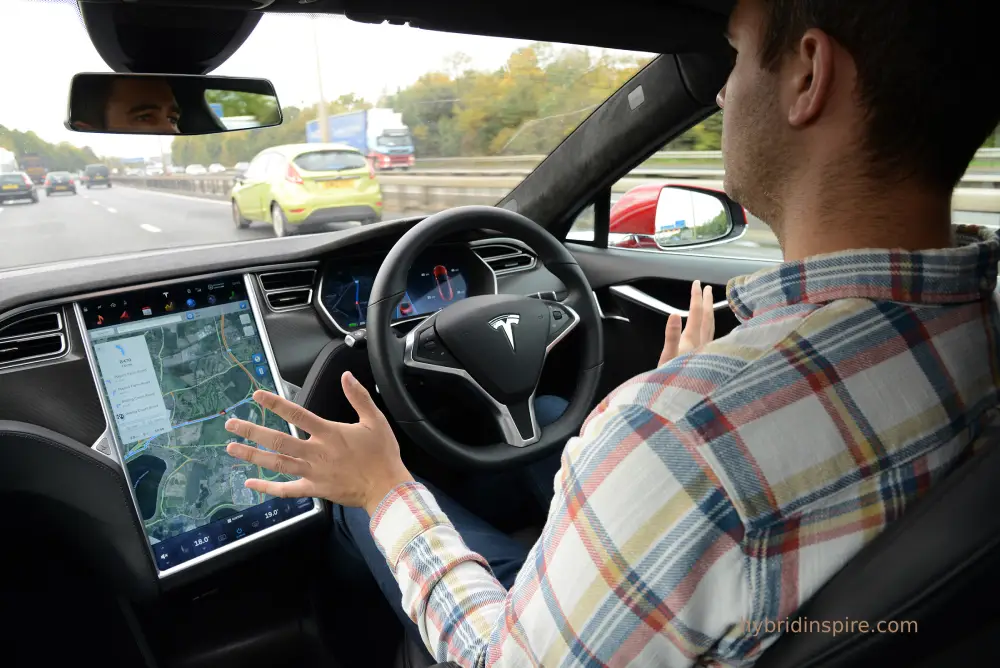
Levels of Autonomous Driving
Level 0 to Level 5 Explained
| Level | Description |
|---|---|
| 0 | No automation. The driver does everything. |
| 1 | Driver assistance (e.g., cruise control). |
| 2 | Partial automation (e.g., steering + braking). |
| 3 | Conditional automation (driver must be ready). |
| 4 | High automation (no driver needed in certain areas). |
| 5 | Full automation (no steering wheel required). |
Most autonomous hybrid vehicles today fall under Level 2 or 3, but Level 4 testing is underway.
Key Components in Autonomous Hybrid Cars
Sensors and Cameras
These serve as the car’s eyes, detecting objects, pedestrians, road signs, and other vehicles.
Electric Motor and Battery System
Vital for energy efficiency. Modern hybrids use lithium-ion or solid-state batteries for extended range.
AI and Machine Learning Algorithms
The “brain” of the vehicle. These algorithms interpret data and make split-second driving decisions.
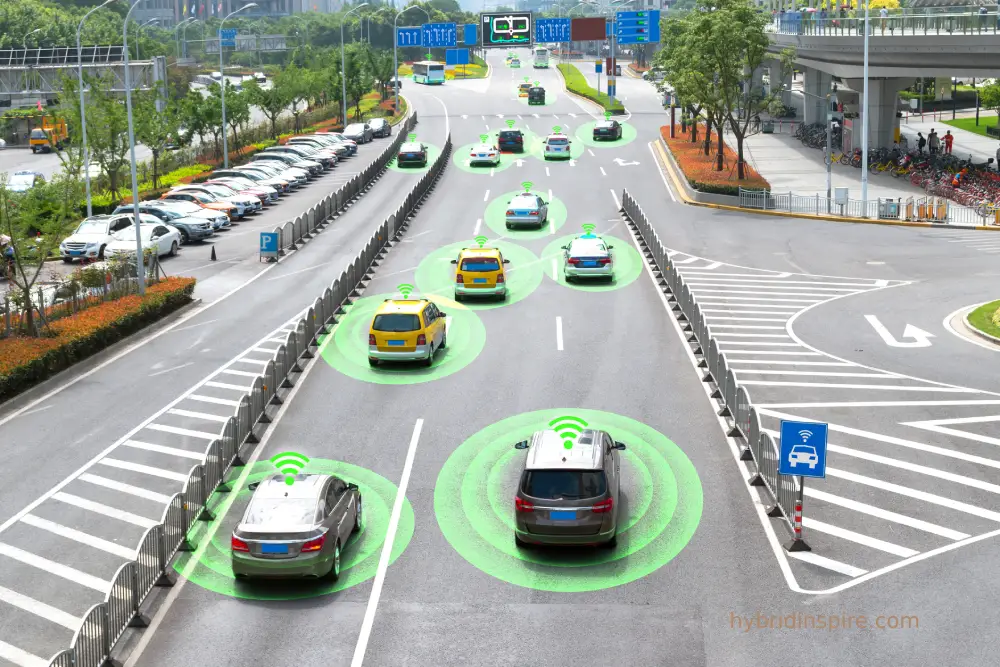
Benefits of Autonomous Driving Hybrid Cars
Environmental Impact
- Lower greenhouse gas emissions
- Reduced noise pollution
- Efficient energy usage
Reduced Accidents and Traffic
- Fewer human errors
- Better reaction times
- Improved traffic flow through intelligent routing
Increased Fuel Efficiency
Hybrids are already fuel-efficient, but AI-powered systems optimize driving even further by analyzing terrain, speed limits, and real-time traffic.
Challenges Facing the Industry
Legal and Ethical Concerns
- Who is responsible in a crash?
- How do cars make life-and-death decisions?
Infrastructure and Regulation
- Smart roads are required for advanced communication.
- Regulations are inconsistent globally, slowing adoption.
Global Market Trends and Projections
The autonomous hybrid market is expected to surpass $800 billion by 2030, with strong growth in North America, Europe, and Asia.
Factors driving this growth include:
- Rising fuel costs
- Environmental concerns
- Government subsidies and regulations

🌍 Top Companies Leading the Innovation
Tesla
Known for its autopilot and full self-driving software, Tesla is pushing boundaries with electric-autonomous hybrids.
Toyota
Pioneers of hybrid cars, Toyota is developing autonomous versions of its popular hybrid models like the Prius and RAV4.
Waymo
A Google subsidiary focused solely on fully autonomous driving. While not focused on hybrids, it influences industry standards.
The Role of 5G in Autonomous Hybrid Cars
5G connectivity allows real-time data transfer between vehicles and infrastructure, enhancing:
- Navigation accuracy
- Remote diagnostics
- Vehicle-to-vehicle (V2V) communication
How Consumers Perceive Autonomous Driving Hybrids
Consumer trust remains a challenge. According to a recent Pew Research study, only 39% of Americans would ride in a fully self-driving car.
Factors influencing this perception:
- Safety concerns
- Cost of technology
- Lack of exposure
Autonomous Hybrid Cars in Urban vs Rural Areas
Urban environments are ideal due to:
- Dense infrastructure
- Available charging stations
- Predictable traffic
Rural areas pose challenges:
- Limited connectivity
- Poor road conditions
- Sparse EV charging networks
🚖 Autonomous Car Sharing and Ride-Hailing Services
Self-driving hybrids are ideal for car-sharing platforms like Uber and Lyft:
- Reduced operational costs
- Lower emissions
- Better fleet management
Expect hybrid-autonomous fleets to dominate the gig economy within a decade.

🏢 The Future of Autonomous Hybrid Fleets for Businesses
From delivery vans to company cars, businesses can:
- Save on fuel
- Improve safety records
- Enhance sustainability
Autonomous hybrids offer an ideal fleet solution, especially for logistics and transport companies.
❓ FAQs About Autonomous Driving Hybrid Cars
1. Are autonomous hybrid cars available for purchase now?
Yes, several models offer semi-autonomous features. Full autonomy is still under testing.
2. Are autonomous hybrids more expensive?
Initially, yes. But tax credits, lower fuel costs, and fewer repairs reduce long-term expenses.
3. Are hybrid autonomous cars safer?
Statistically, autonomous systems reduce accidents caused by human error, making them safer in many cases.
4. How do they charge?
Plug-in hybrids can charge via a standard outlet or at charging stations. Regenerative braking also helps.
5. Can I drive an autonomous hybrid manually?
Most models allow manual control, especially those below Level 4.
6. What countries are leading in autonomous hybrid adoption?
The U.S., China, Japan, and Germany are at the forefront, both in technology and infrastructure.
Conclusion: The Road Ahead for Self-Driving Hybrid Cars
Autonomous driving hybrid cars aren’t just a technological marvel—they’re a glimpse into a cleaner, safer, and more efficient future. As challenges are addressed and technology matures, these vehicles will become as common as smartphones. The fusion of AI, clean energy, and mobility is paving the way for smarter cities and better lives.
Related: How To Extend Hybrid Battery Life

